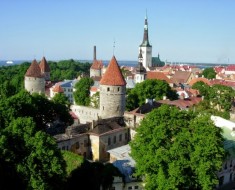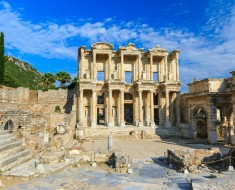This is one of the places where everyone feels they ought to go. There’s an airport near at hand, package holidays from all over Europe, and although the famous tower isn’t leaning as it once did, loads of tourists still flood into the city. Ten years ago we were amongst them. To the north of the city the Campo dei Miracoli (Field of Miracles) was made a World Heritage Site in 1987, and incorporates the massive Cathedral, the Tower and the impressive Baptistery, set to one side of the other two like a tall circular wedding cake and which, though immensely ornate inside, we found quite moving.
Which brings us to the Tower which took 200 years to compete, and has been moving ever since. Built on poor foundations and loose substrata, there have been numerous efforts to save the bell tower from falling, the latest of which involving international cooperation seems now to have dealt with the problem, although because of its fame as a tourist attraction, it was decided to maintain a slight list to the north so that it could live up to its reputation.
Encircled by rooted steel ropes to one side, it is still a remarkable sight. One of those places where you have seen so many photos it feels as if you have been there before.
The city is at the mouth of the Arno River and was once a thriving port. It has been a major University for many years and today specialises in Physics, Mathematics, and Engineering, all of which must have ptovided practical resources for the debates about what to do with the Tower. For us the great intellectual figure of Pisa, Galileo, was a major reason for our visit. He was born in 1564 and lived here for the next 28 years. We found his house and feeling the touch of history, we wandered off and for a while got lost not only in our thoughts but in the city as well.
Called the father of science, physics and astronomy, Galileo published his discovery that the sun, as Copernicus had claimed, was the centre of the solar system and not the earth.
Incurring the disapproval of the Catholic Church, his mature years were cruelly confined as a consequence; though he was cared for by one of his three daughters. Dava Sobel has written a fascinating book on that relationship.
So there in the Field of Miracles is a proud statement of the Church, but not far away is the house from which great discoveries were made, standing as a rebuke to the Church for its closed mind in the face of a new truth. But Galileo has the last word: ‘I render infinite thanks to God for being so kind as to make me alone the first observer of marvels kept hidden in obscurity for all previous centuries’.
B.R.




